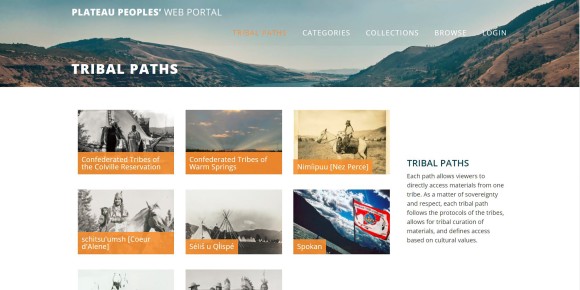Mukurtu is a content management system and digital access tool for cultural heritage, built for and in ongoing dialogue with indigenous communities. Developed and maintained at the Center for Digital Scholarship and Curation at Washington State University, the free and open source platform is designed to meet the particular curatorial and access needs of indigenous peoples. Mukurtu offers the ability to provide differential access to community members and the general public and to create space for traditional narratives and knowledge labels that foreground Indigenous knowledge in the metadata of digitized cultural heritage materials.

Mukurtu is guided by a commitment to respecting the rights and traditions of the people whose heritage is being represented. Director of the Center for Digital Scholarship and Curation Kimberly Christen explains, “The colonial collecting mission has left a living legacy of cultural materials that are displaced from their home communities and often-times contain wrong, misleading, derogatory, or offensive metadata, that gets continually and endlessly circulated once those collections are digitized, put online, and then scraped up by aggregators.”
Mukurtu also offers tools to help indigenous communities retain control over their digital cultural heritage while also sharing with the world. “Mukurtu allows anyone using the platform to decide how to share materials in very granular and dynamic ways,” Christen says. “It also focuses on rich narration and an undoing of standard notions of authority in relation to archives and content management, display, and circulation.”
The project has been developed in conversation with Indigenous communities from the beginning, Christen explains: “Mukurtu started from my work in Central Australia with the Warumungu Aboriginal community and has since then relied on a community software development model. Our team continues to add features and functions to Mukurtu based on the needs and feedback from Indigenous communities all over the world and specifically now, our Mukurtu Hubs that are regional centers for Mukurtu support and software development.”
The Plateau Peoples’ Web Portal
The best way to introduce Mukurtu is through an example, Christen says, pointing to the Plateau Peoples’ Web Portal. “[I]t is a collaboration between eight Plateau nations, Washington State University’s Center for Digital Scholarship and Curation, and local, national and regional partners including the Smithsonian Institution and the Library of Congress.”
Material in the portal is selected in partnership with tribal members. Christen continues, “In the Portal, material is chosen by tribes to be digitized—no decisions to digitize are made prior to consultation—and once the material is chosen and digitized we engage in what we call collaborative curation which provides a framework for engaging with communities to ensure that the material in the Portal is curated by the tribes. This includes adding specific names, cultural narratives, traditional knowledge and in addition allowing the option of multiple records for any one item.”
For example, the metadata for a root gathering bag from Wasco-Confederated Tribes of Warm Spring is described both physically (“Round, twined, cylindrical cornhusk bag. Bird and animal designs.”) and with its cultural narrative by tribe members, including by Valerie Switzler who observes: “The weaving is really tight, when we get older and our eyes fade and if we try to do the design by memory it might be a bit off. It looks like double twineing. You start a design and then loop it again. They would always encourage us, my aunt told me my sally bag was beautiful, even if it was cro[o]ked. They were always encouraging us.”